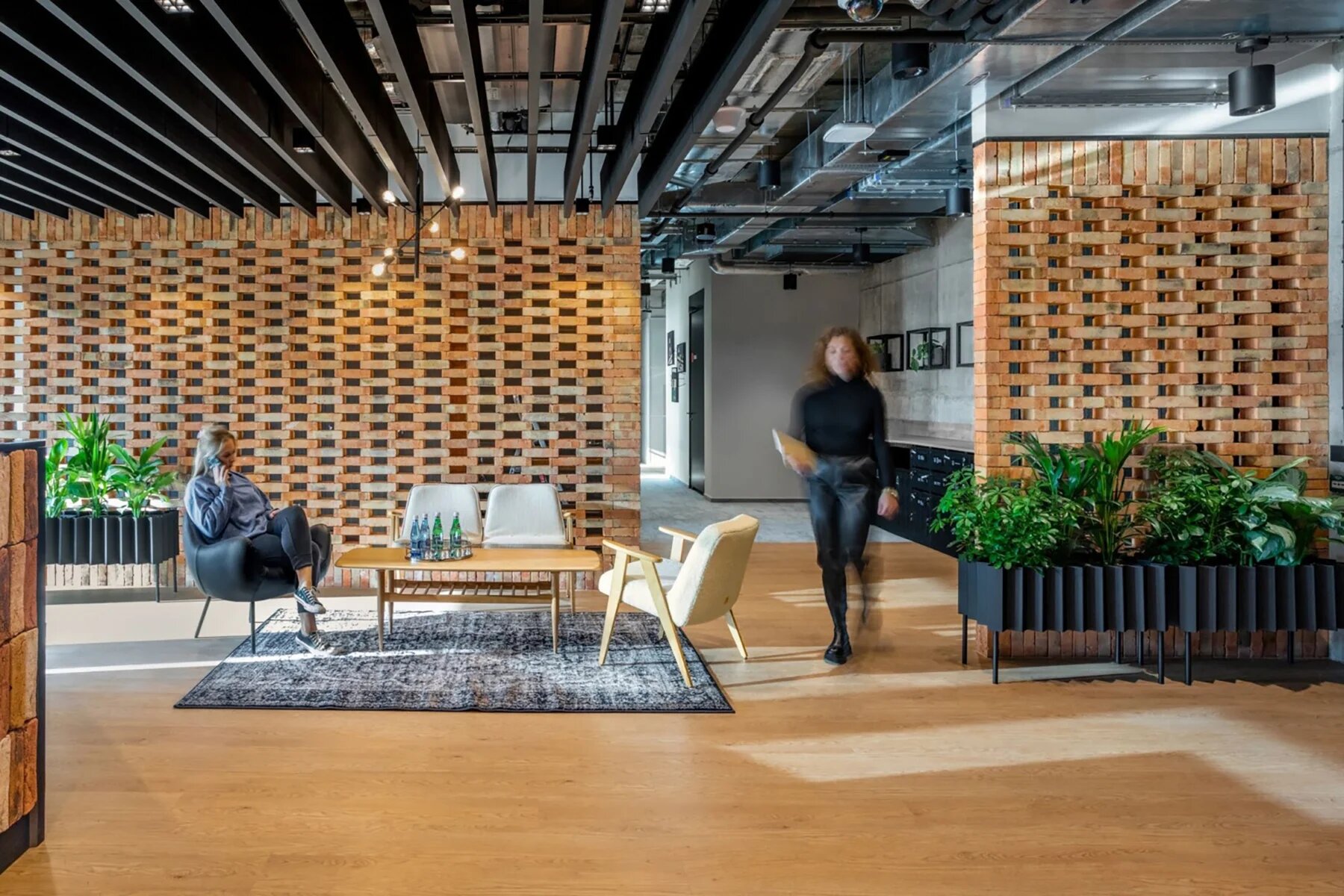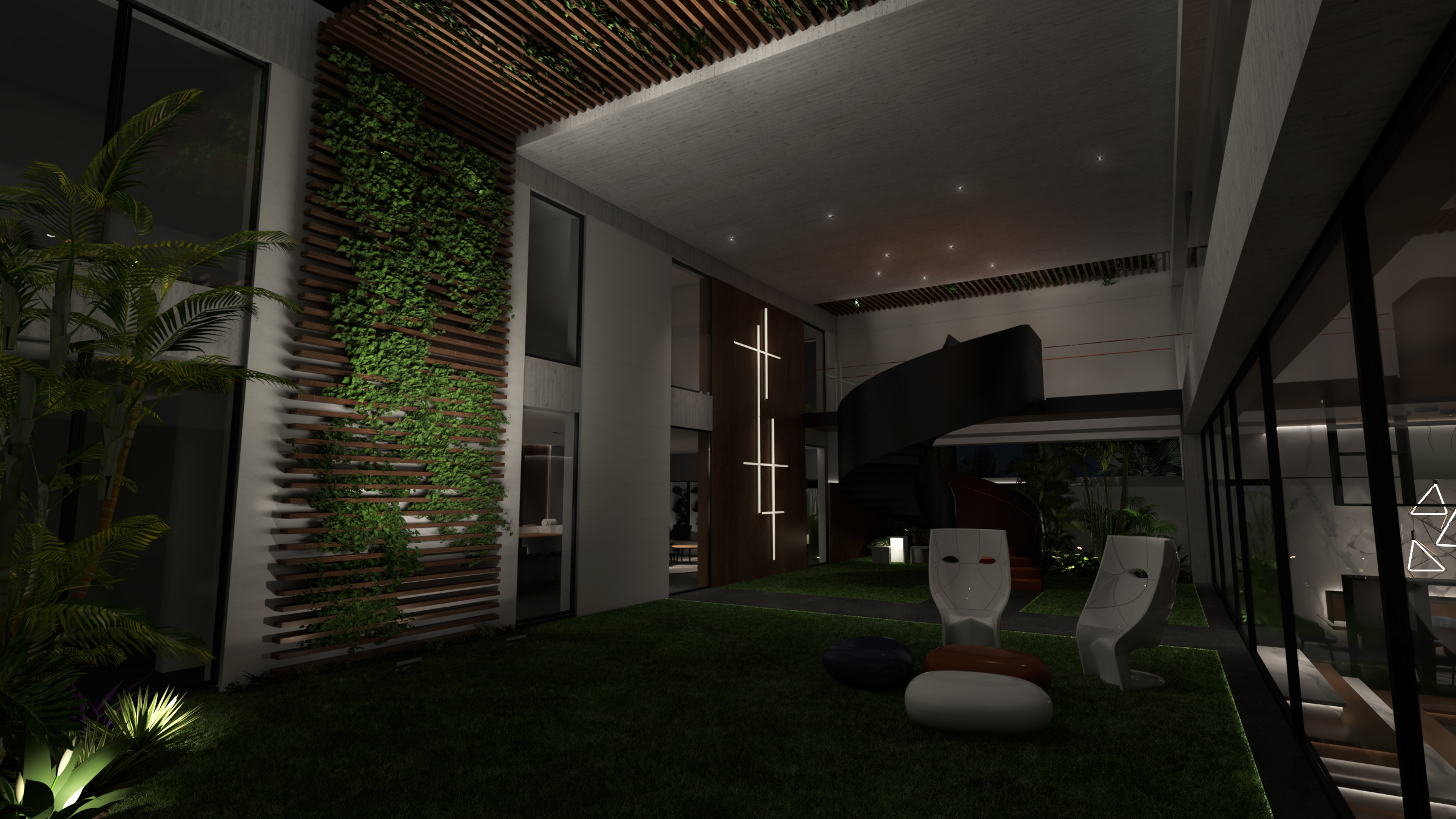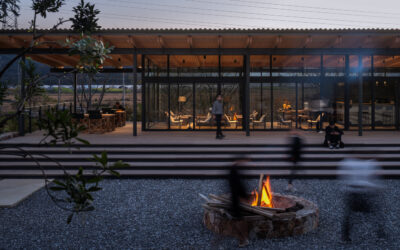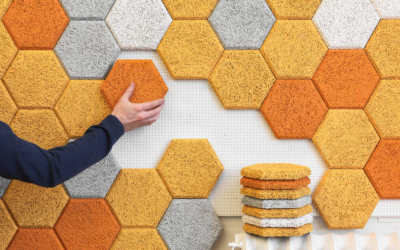Sensory Harmony: Designing Spaces with Neuroscience for Integral Well-Being
Neuroarchitecture stands at the frontier of design innovation, fusing neuroscience with architecture and interior design to create spaces that resonate with our psyche. As we enter the sanctuary of interiors, every element, from spatial layout to color palette, has the potential to influence our mental health and creativity. With most of our lives spent indoors, interior design is not just a matter of aesthetics, but a powerful tool for enriching the human experience.
Well-designed spaces can be as restorative as restful sleep or a balanced diet, contributing to our emotional balance and psychological well-being. In this context, interior design takes on a profound responsibility: that of shaping our environments to embrace the fullness of our human experience, balancing functionality with an empathetic understanding of our emotional and cognitive needs.
What is Environmental Neuroscience?
Environmental neuroscience is a branch that explores the dynamic relationship between indoor environments and the neurobiology of the individuals who inhabit them. It examines how variables such as acoustics, lighting, spatial layout and connection to nature affect brain processes and, ultimately, human behavior. Research in this field has shown how excessive noise can interfere with concentration and increase stress levels, while adequate natural lighting can improve mood and productivity. In addition, the arrangement of furnishings and accessibility to open space or green areas can facilitate social interaction and encourage physical activity, critical elements for psychological well-being.



Residential project Apt 2DM, Malasaña, Spain
Studies have also revealed that outdoor views, especially those that offer scenes of nature, can reduce mental fatigue and promote attention recovery. On the other hand, visual and auditory privacy is crucial in environments such as hospitals and offices, where it can influence an individual’s sense of control and autonomy. Environmental neuroscience provides a scientific basis that interior designers can use to optimize spaces based on these findings, with the goal of improving the user experience and their cognitive and emotional well-being. This holistic approach to interior design not only has implications for mental health, but can also lead to more inclusive and equitable spaces that respond to the needs of a wider range of users.
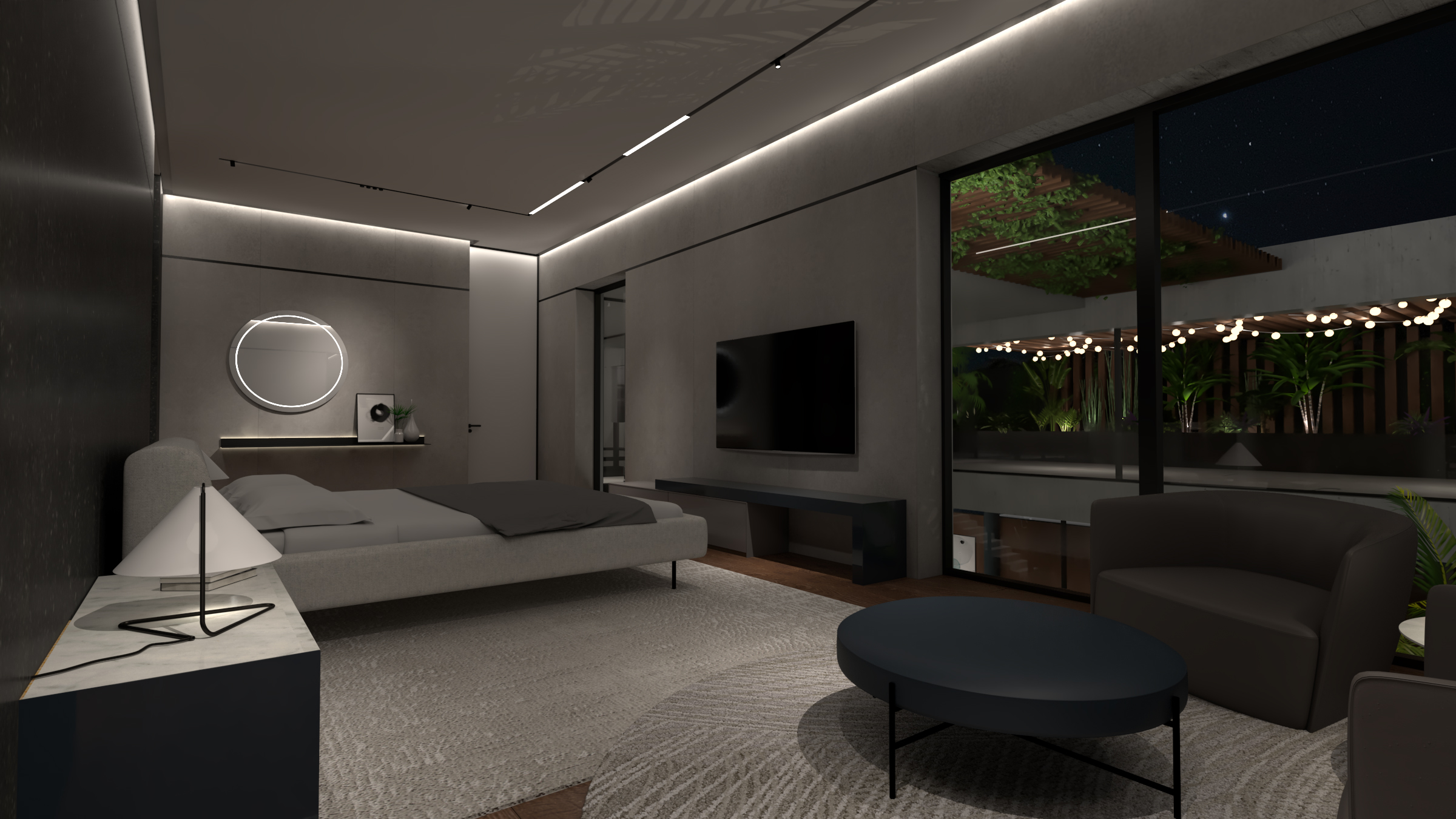
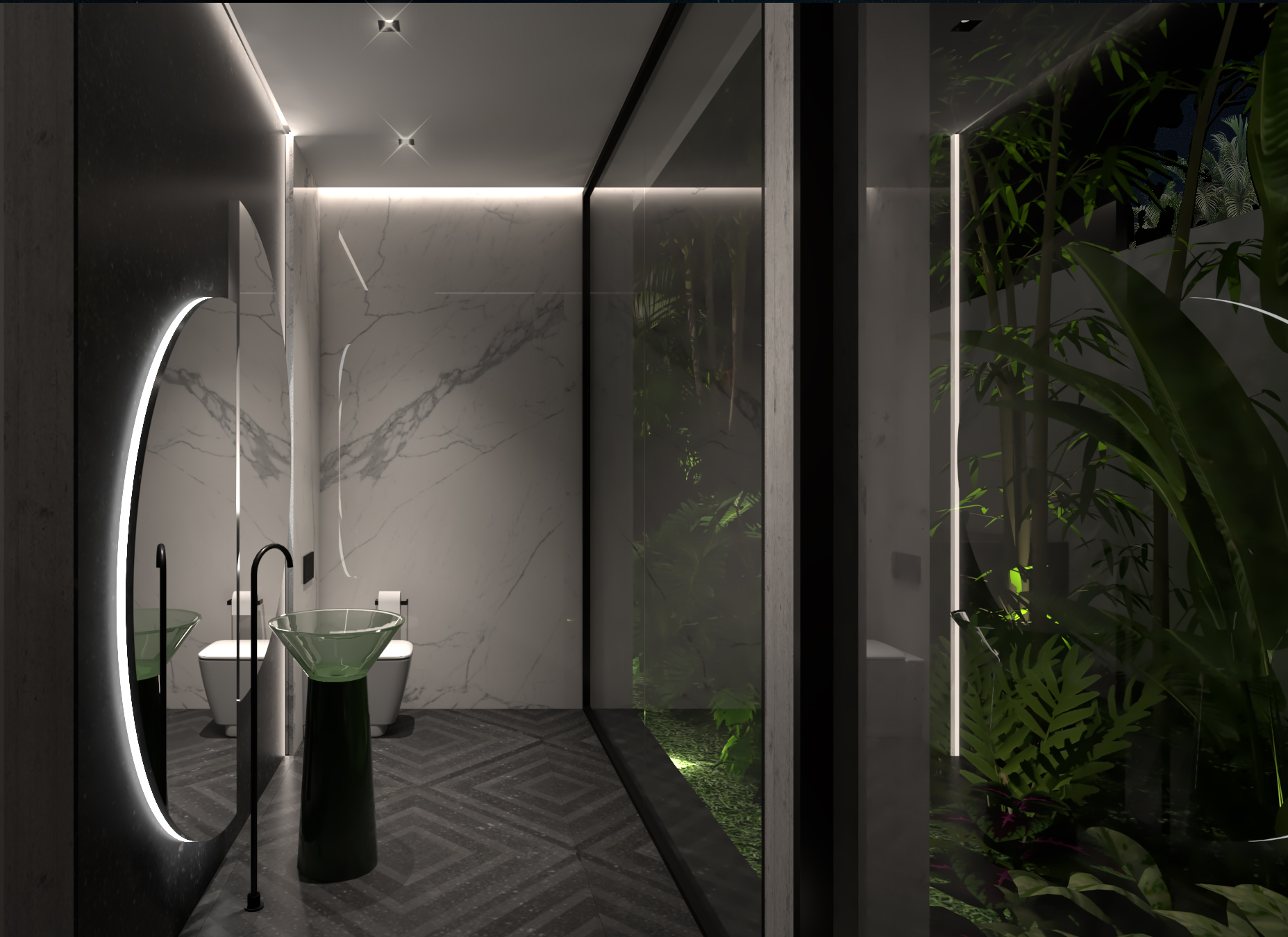
Inclusive Design: Adapting Spaces to the Needs of Each Age Group
The concept of “Inclusive Design” goes beyond accessibility, seeking to create environments that resonate with the unique needs of each stage of human life. This approach urges designers to consider how factors such as safety, comfort and cognitive stimulation can be optimized for different demographic groups.
For children, interactive play areas and study rooms that use vibrant colors and organic shapes can stimulate creativity and learning. In workspaces, the inclusion of breakout areas and plants can improve concentration and reduce mental exhaustion. For the older population, design can include soft lighting and unobstructed pathways that promote independence and minimize the risk of falls.
“Inclusive design” becomes a powerful tool that, aligned with environmental neuroscience guidelines, can significantly improve the experience and quality of life for each individual interacting with the space, promoting an environment of acceptance, comfort and stimulation for all.

Shaping Spaces with Purpose
In addition to considering the target user profile for design, the purpose of the space should be analyzed; especially those that respond to specific psychological and physiological needs; as these spaces are meticulously orchestrated to improve the quality of life and efficiency of their users.
In a hospital, the inclusion of soft colors, lighting that mimics circadian rhythms and green spaces can contribute to faster recovery and less use of painkillers. Schools designed with ample areas of natural light and colors that promote calm and concentration can improve cognition and decrease agitation in students. Work environments can benefit from open spaces that encourage collaboration, along with quiet areas for concentrated work, thus balancing emotional well-being with productivity.
Likewise, public spaces such as parks and plazas can be designed to promote social interaction and physical activity, incorporating vegetation and intuitive pathways that invite movement and contemplation. The integration of technology and adaptive furniture also plays a crucial role in customizing space to meet the changing needs of users.
Each of these environments, when designed with a clear purpose, not only serve a practical function, but also act as places of healing, learning and growth, exemplifying the practical and humanistic application of environmental neuroscience in architecture and interior design.

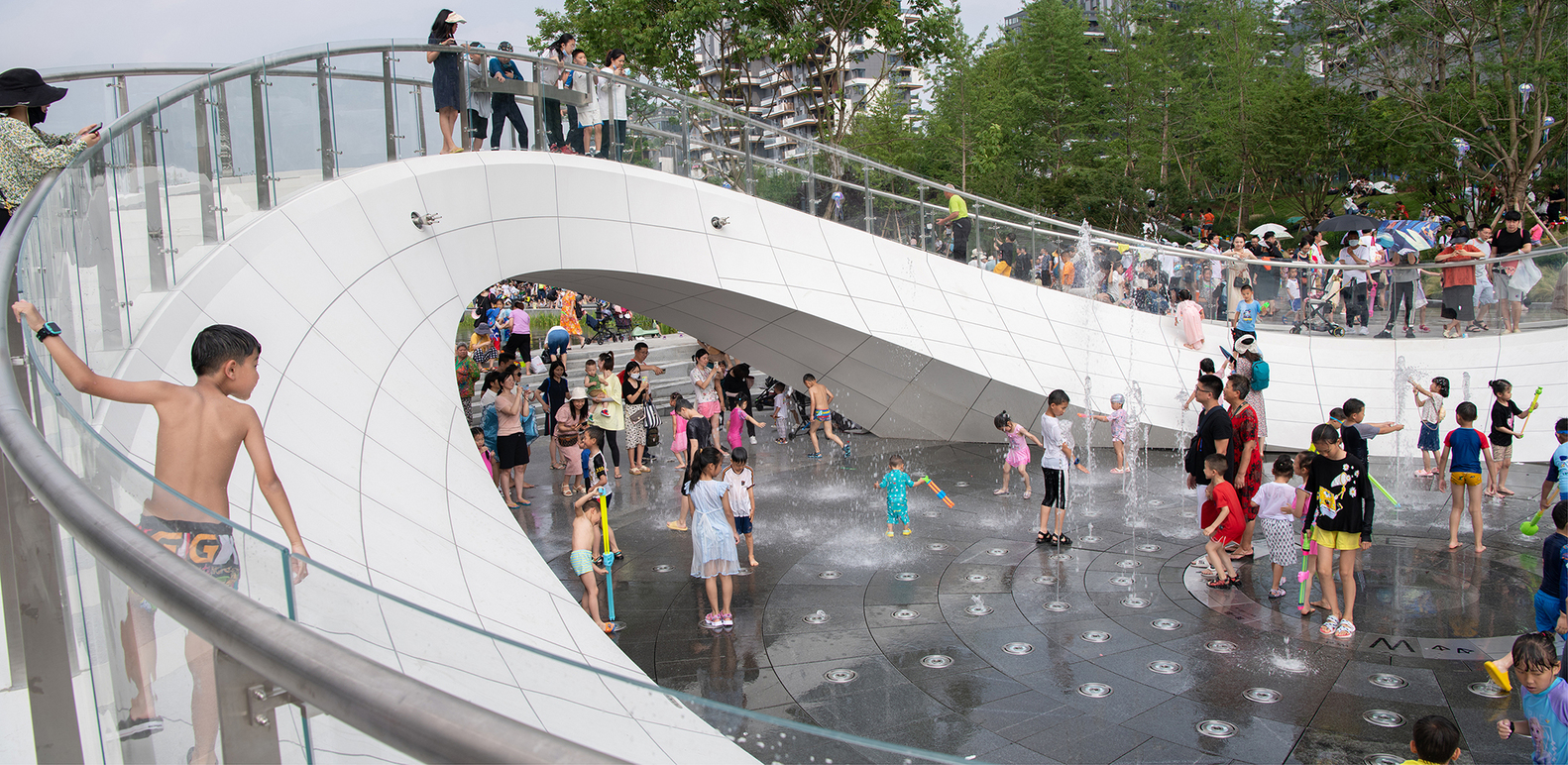
¿Cuáles son los factores claves de la Neurociencia Ambiental?
In the context of interior design, it leads us to deeply consider how spaces can be curated to resonate with human emotions. It recognizes that the environment where one resides or works is not simply an inert background, but an active participant in the choreography of human experience.
Designers, by adopting an emotion-based approach, seek not only to create pleasing aesthetics, but also to cultivate an atmosphere that promotes meaningful and positive experiences. This involves understanding the psychology of color, the influence of lighting on circadian rhythms, acoustics that affect auditory comfort, and the configuration of space that promotes beneficial social interactions.
Light
Light” in environmental neuroscience focuses on how lighting affects human psychology and physiology. Natural light regulates circadian rhythms, which in turn control sleep patterns, energy levels and moods. Exposure to sunlight during the day improves attention and alertness, while soft lighting is preferable for evening and nighttime hours, promoting relaxation and preparing the body for rest. In interior design, natural light is maximized through windows, skylights and strategic building orientation. When artificial lighting is used, technologies that can adjust their color temperature and intensity throughout the day to mimic the natural light cycle are preferred, thus contributing to a balanced and healthy indoor environment.

Efectos de la Iluminación circadiana
Color
Take advantage of thrift stores and garage sales to find unique pieces with history and character. These places can be excellent sources for affordable furniture and accessories, allowing you to incorporate authentic and unique elements without spending a fortune. Also, consider restoring or modifying pieces to suit your needs and style.
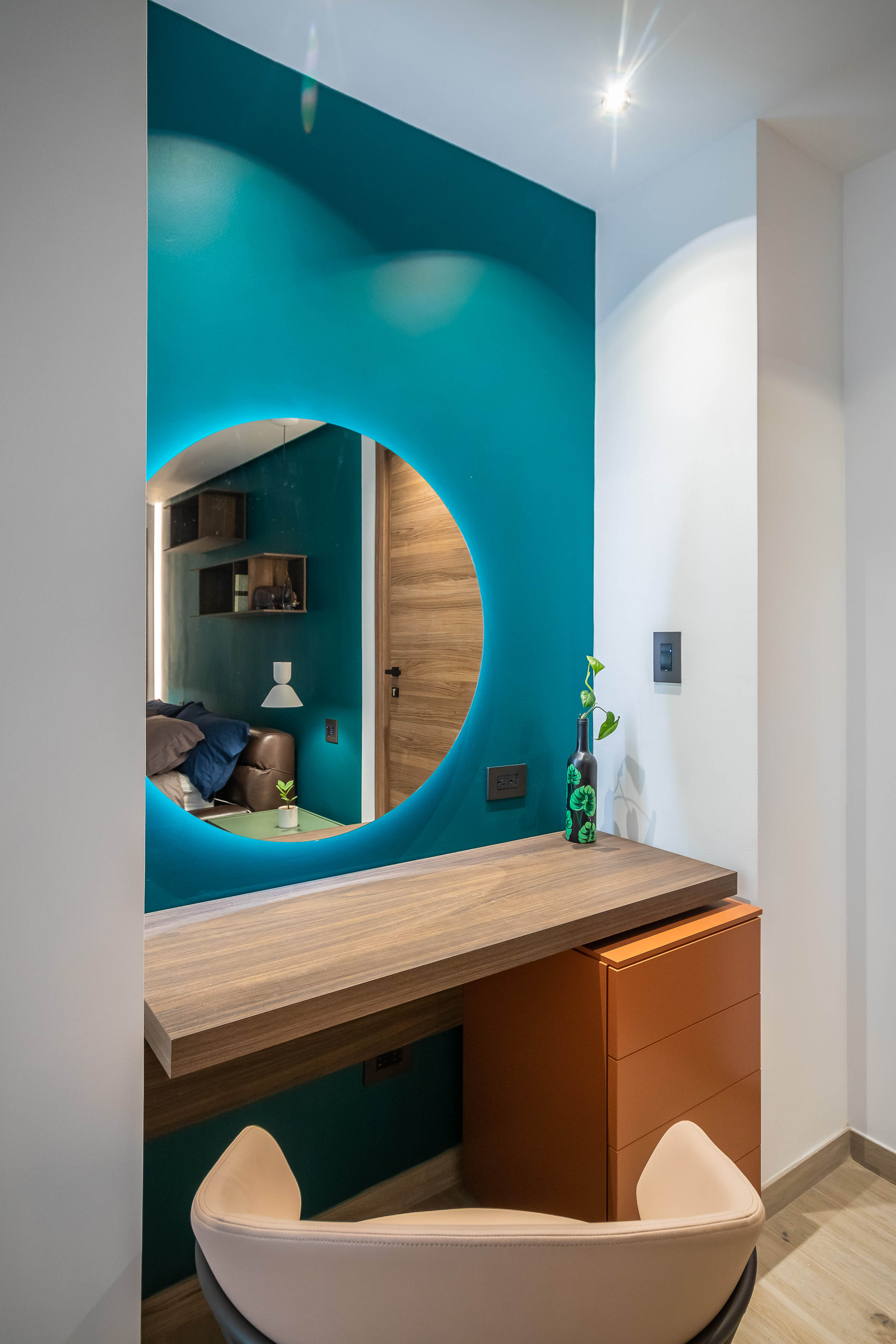
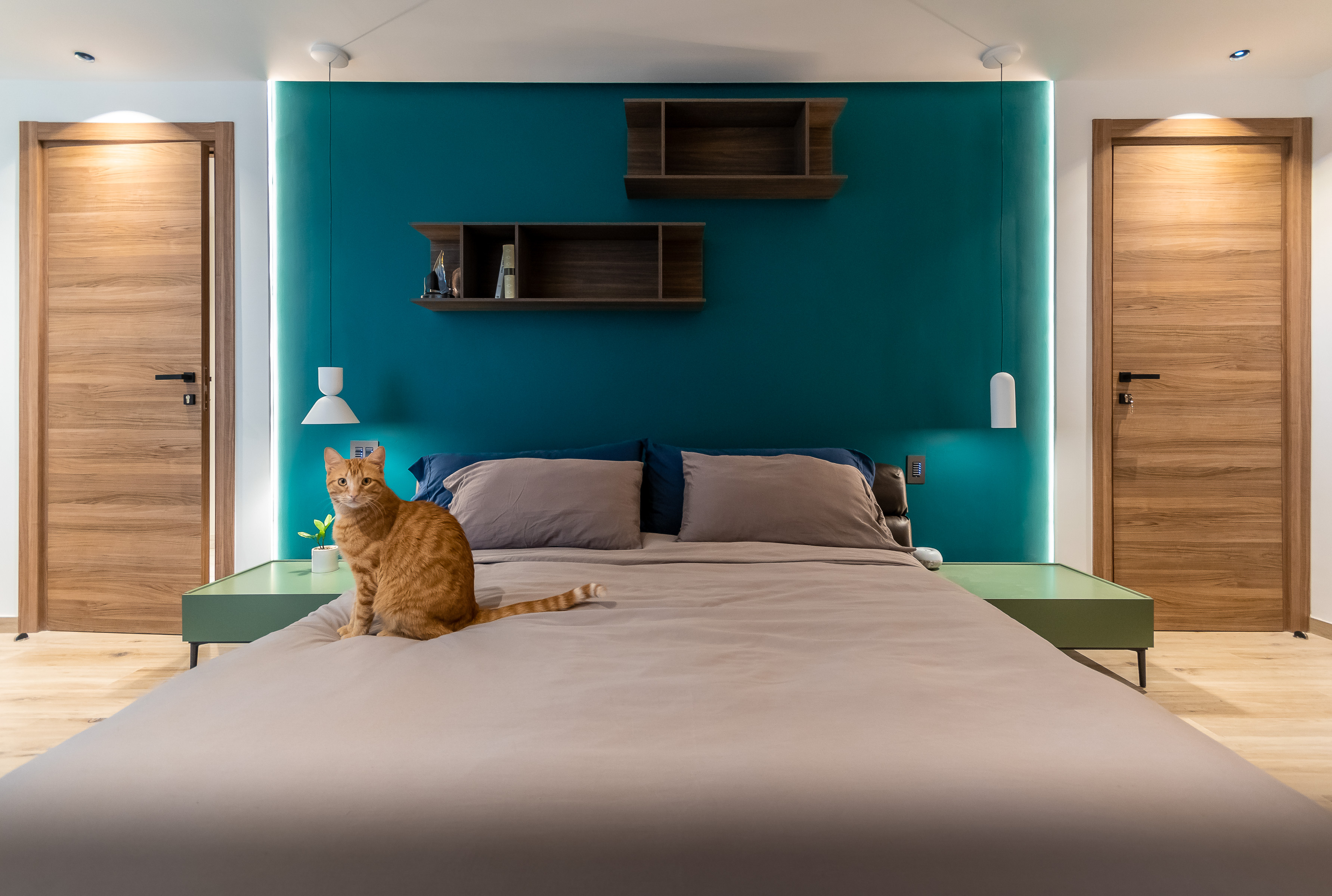
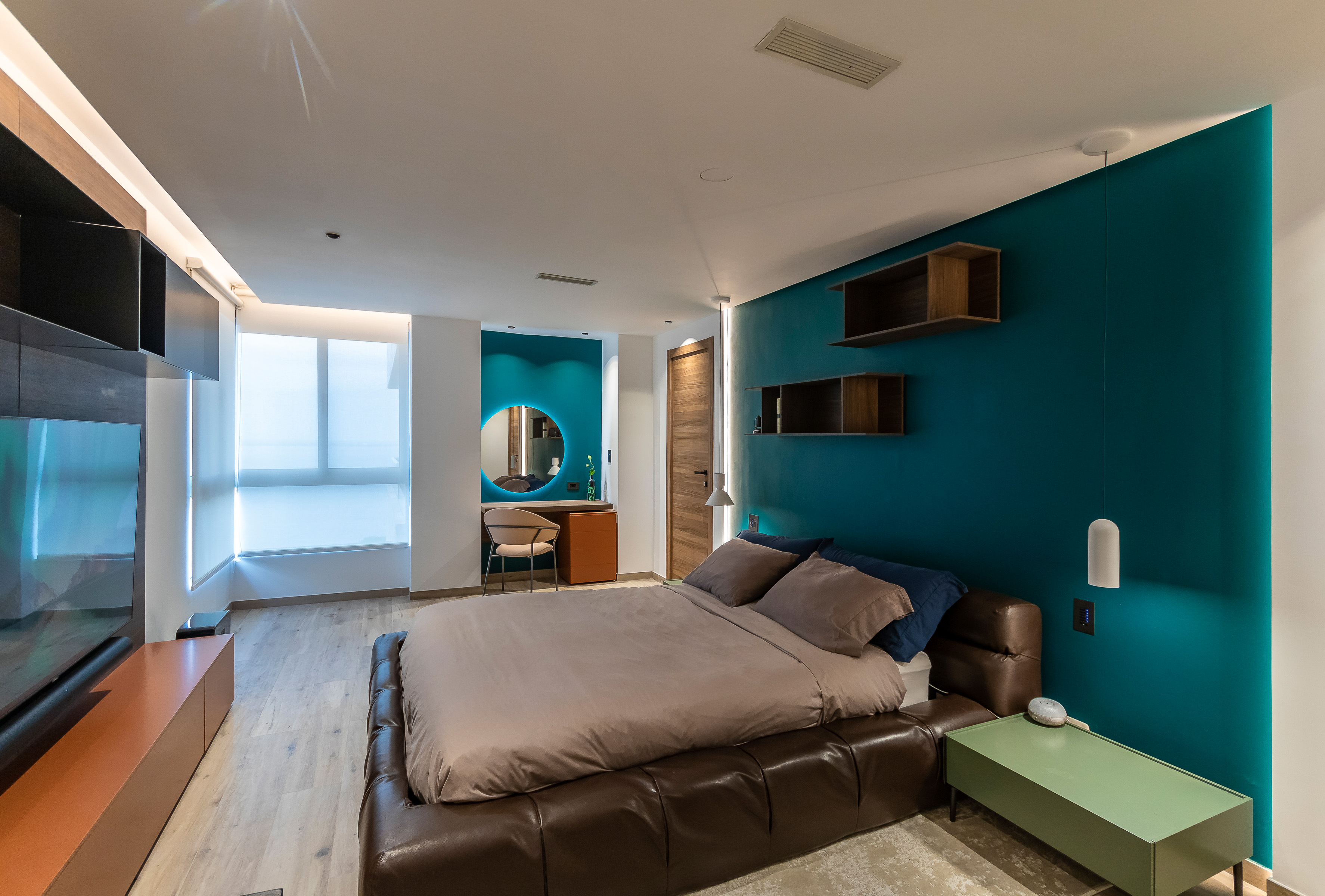
Proyecto residencial Apto CM19, Maracaibo, Venezuela.
Acoustics
Good acoustic design seeks to minimize distracting and annoying noises, avoiding echoes and reverberations that may hinder communication or concentration. In spaces where quietness is required, such as libraries or bedrooms, sound-absorbing materials and strategic designs that block external noise are used. On the other hand, in collaborative environments, an acoustic balance is sought that allows interaction without creating a chaotic environment. The goal is to create spaces that facilitate auditory clarity and sound privacy when necessary, contributing to a more comfortable and healthy environmental experience.
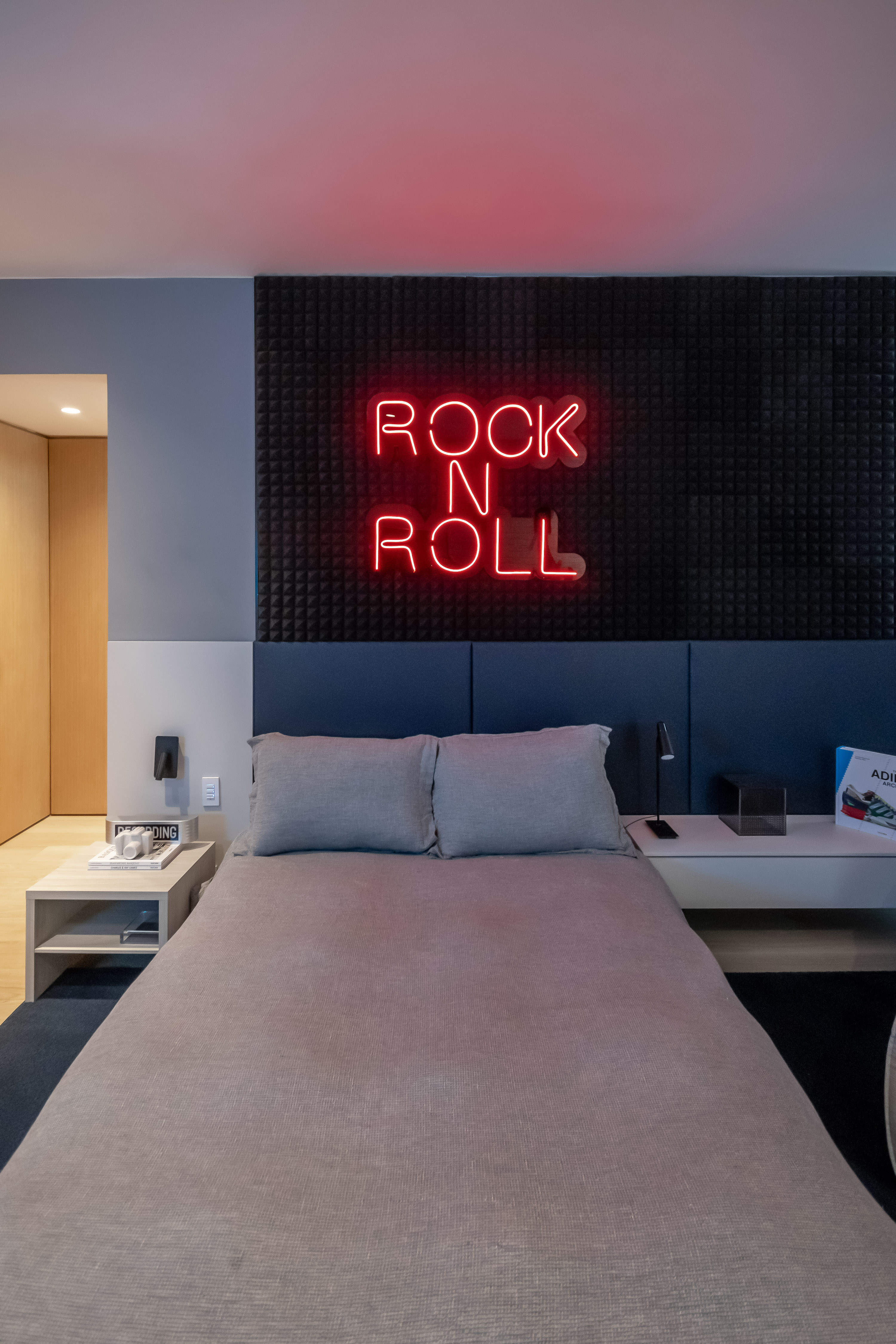
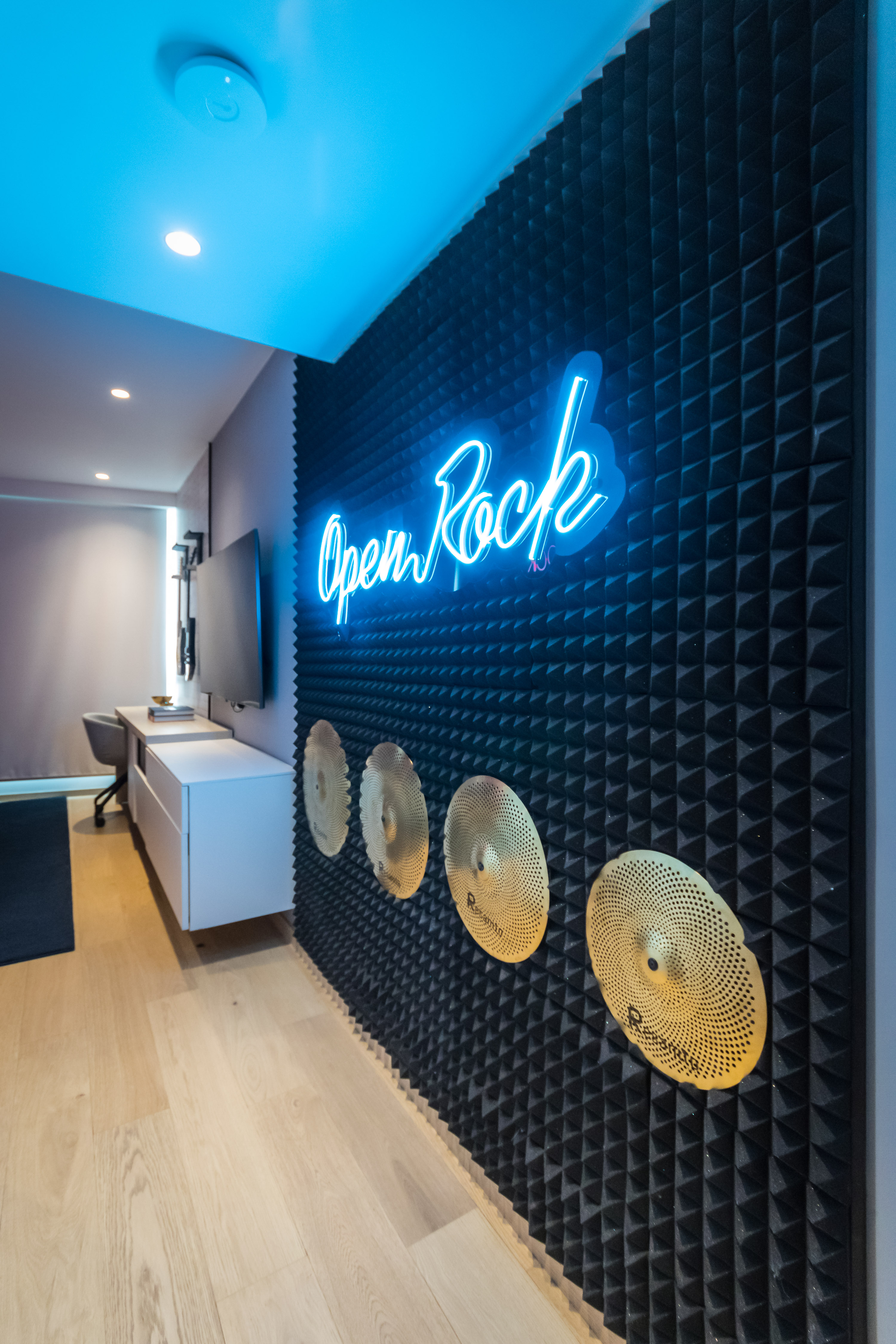
Proyecto residencial Apto PR6, Caracas, Venezuela.
Connection with Nature
Nature connection, also known as biophilia, focuses on the innate tendency of humans to seek connections with nature and other living systems. Integrating natural elements into interior design, such as plants, water, wood or stone, can significantly improve psychological and physical well-being. Plants, for example, not only improve air quality but also reduce stress, improve concentration and enhance overall satisfaction with the environment.
Designs that incorporate outdoor views, natural materials and indoor green spaces promote a sense of tranquility and faster recovery from stress and mental fatigue. This design approach seeks to create spaces that reflect and emulate aspects of the natural world, offering a serene and stimulating retreat within the built environment.
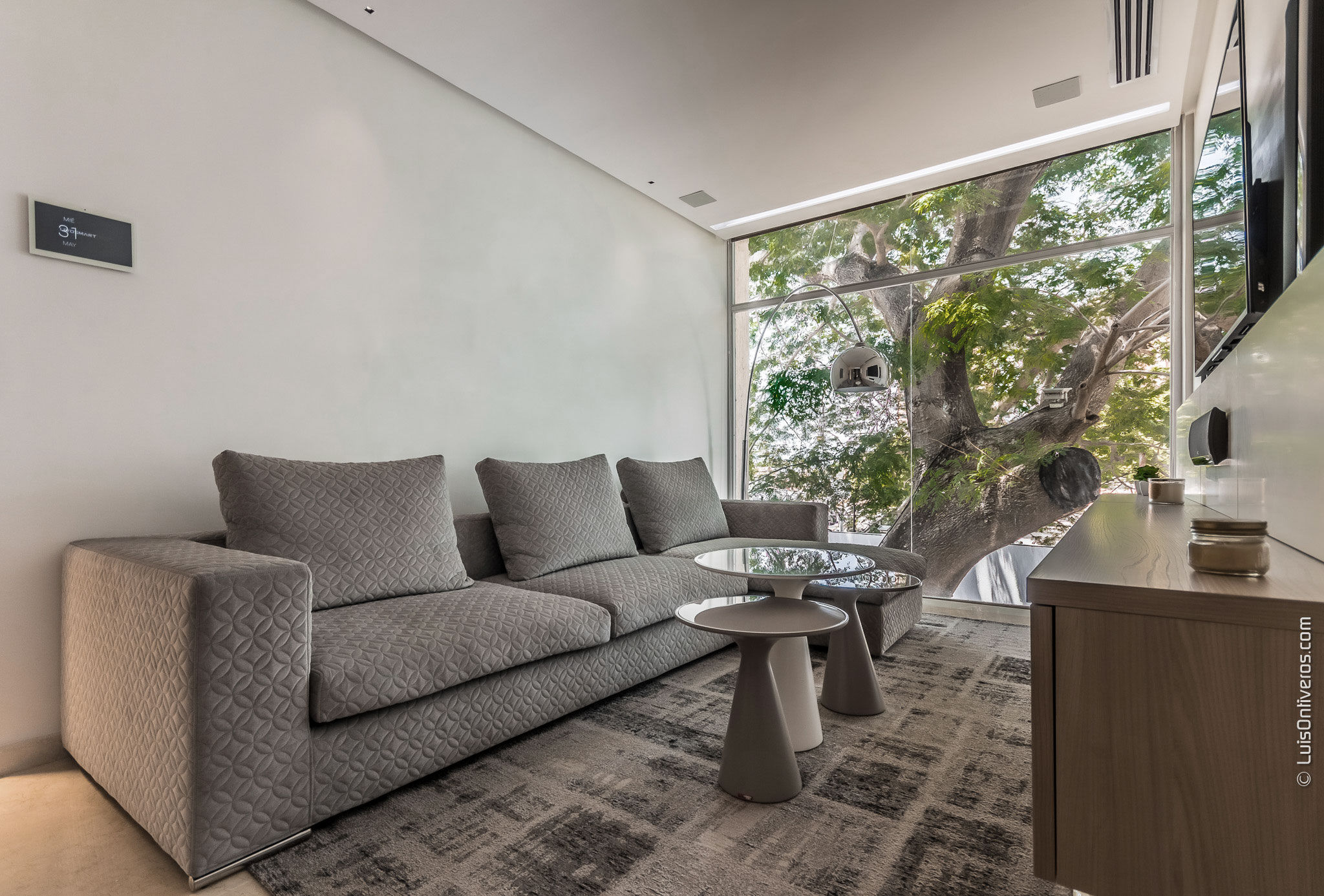
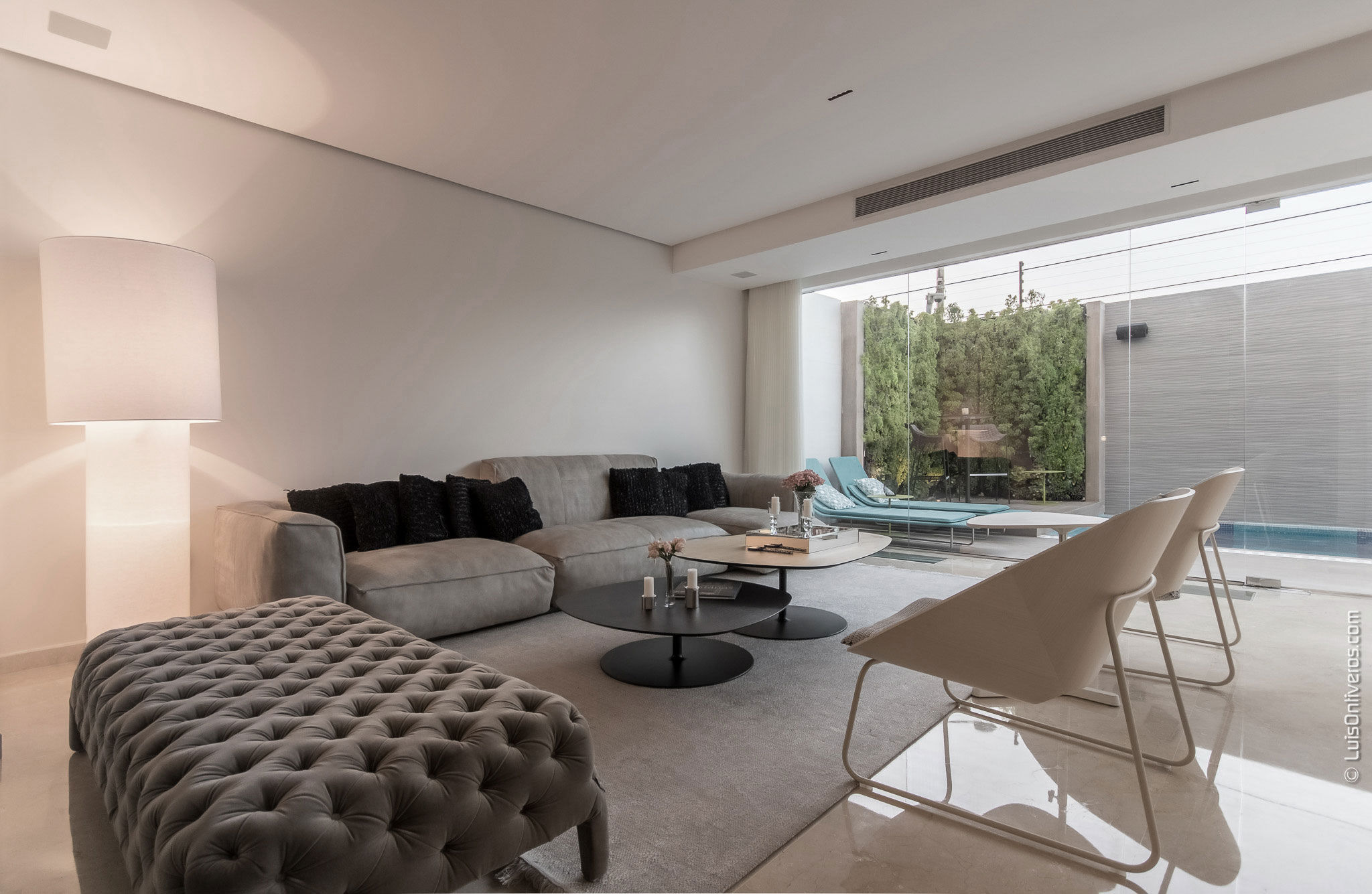
Space and Form
This refers to how the physical configuration and geometry of a place affect human behavior and emotions. Open spaces with abundant light and clean lines can encourage freedom of movement and social interaction, while more intimate areas can offer refuge and concentration. The shape of objects and furniture is also key; rounded, organic shapes are often perceived as more welcoming and confident, in contrast to angular shapes that can evoke a sense of formality. Furniture arrangement and strategic zoning of space are used to direct the flow of people and interaction, as well as to define specific activity areas within a larger environment.
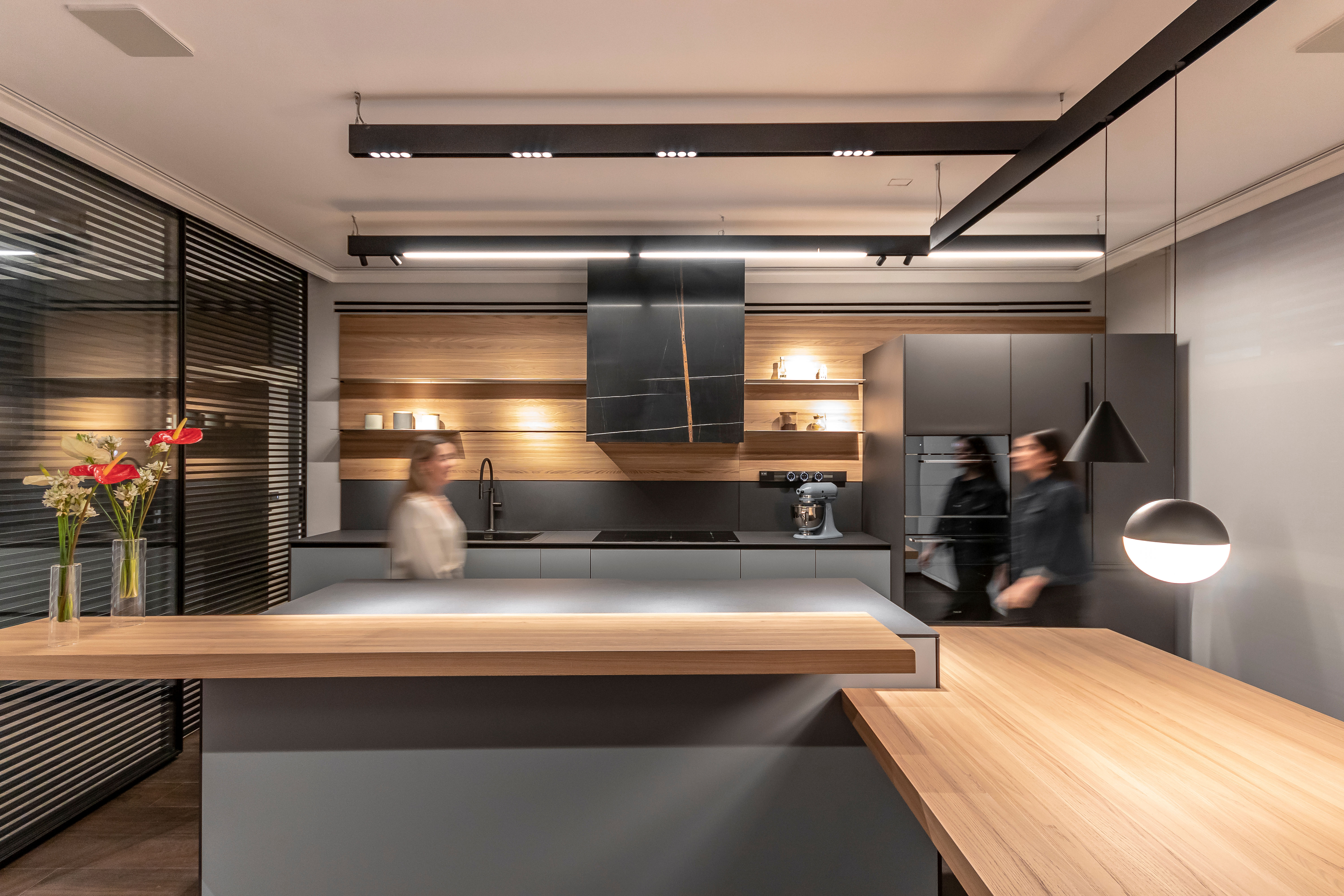
Proyecto residencial Apto S3, Maracaibo, Venezuela.
Textures and Materials
Textures and materials are a powerful tool for influencing the sensory and emotional experience of interior spaces. Materials with rich and varied textures can evoke memories, stimulate touch and enhance the connection to the natural environment. Wood, natural fibers and stone not only add beauty and sustainability, but also have beneficial acoustic and thermal properties. The conscious use of these materials can transform a space, making it more welcoming and harmonious, and providing a more intimate and authentic experience.
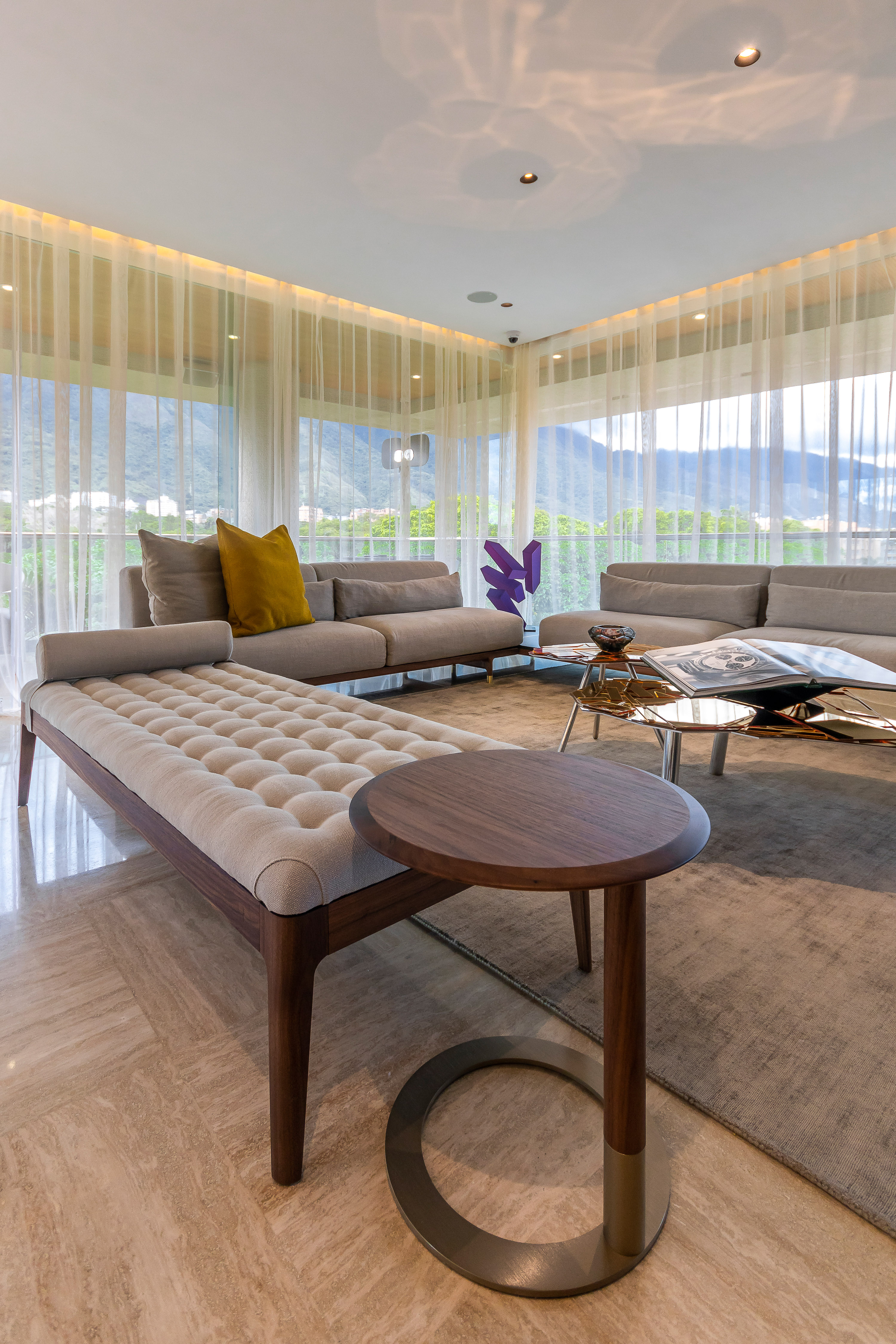
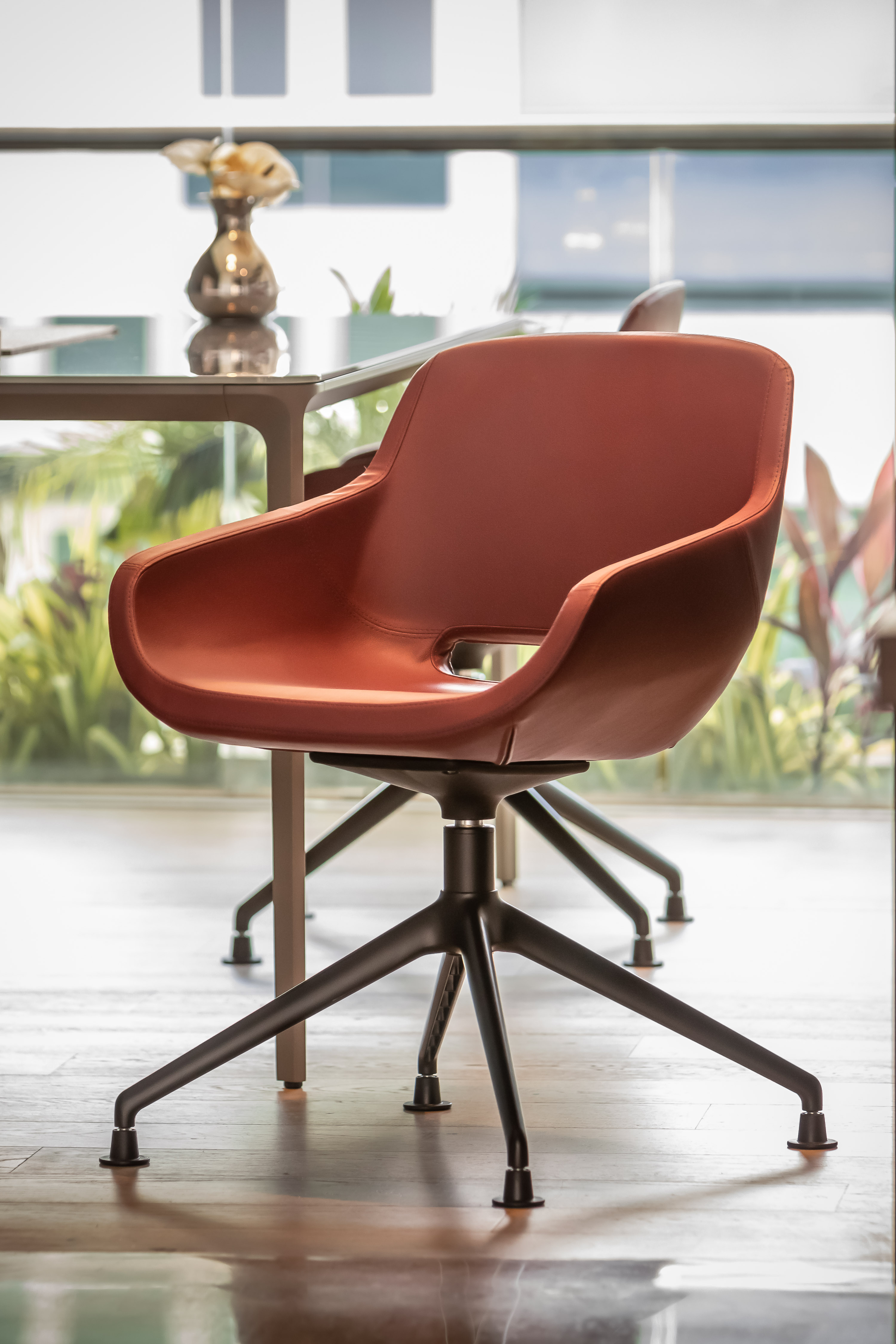
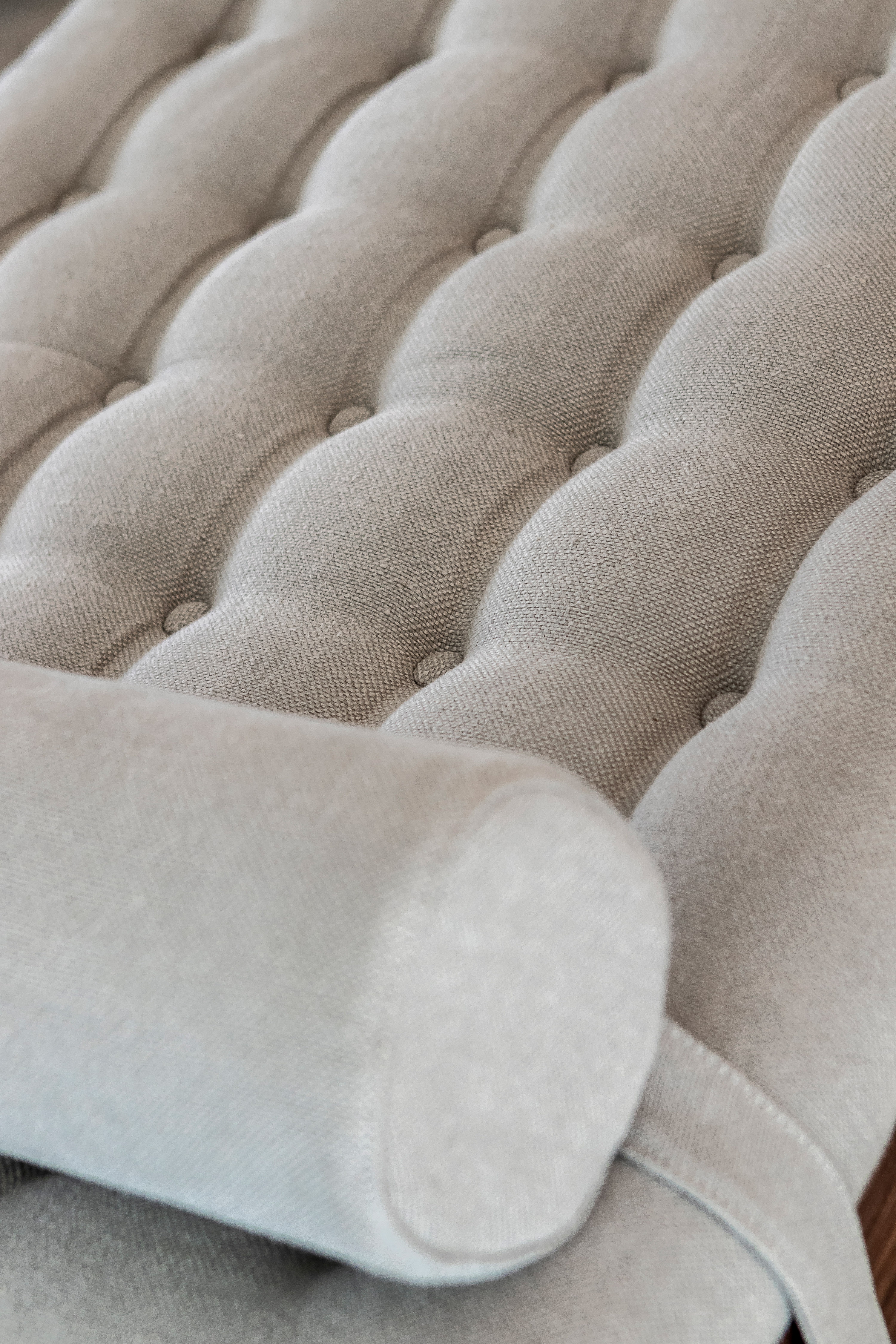
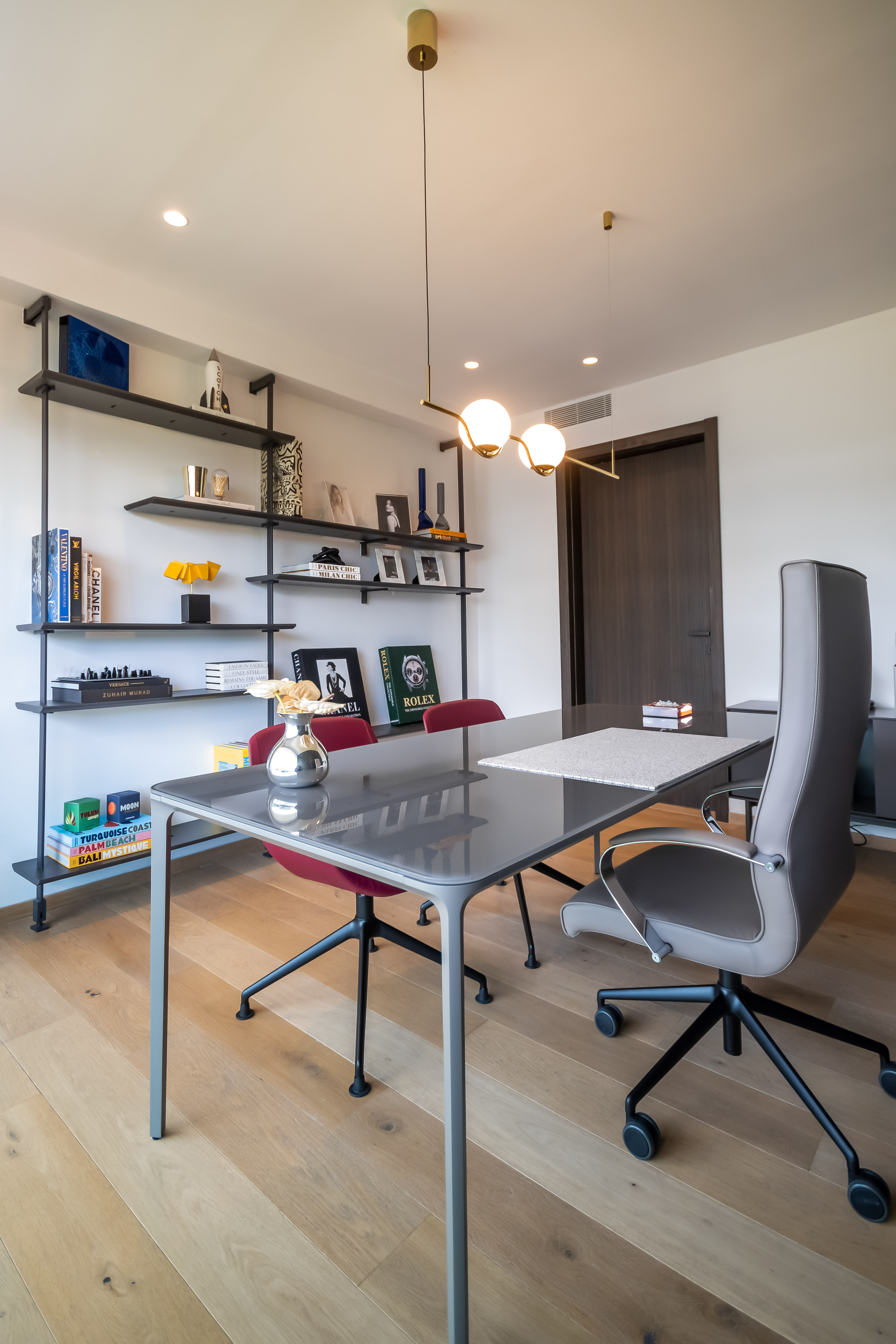
Proyecto residencial Apto PR6, Caracas, Venezuela.
Furniture and Ergonomics
Ergonomics and furniture design are essential to creating environments that are not only aesthetically appealing, but also promote health and wellness. Selecting furniture that supports healthy posture and facilitates mobility can have a significant impact on daily comfort and long-term productivity. In addition, arranging furniture that encourages a natural flow of movement and easy interaction between people can improve social dynamics and emotional well-being in the space.
At the intersection of architecture, interior design and neuroscience, a holistic approach is born that recognizes the deep connection between our environments and our inner selves. By contemplating light, color, acoustics, biophilia, space, textures, and furniture ergonomics, we are not only designing spaces, we are sculpting human experiences. This approach drives us to create environments that are not only a delight for the senses but sanctuaries for the spirit, where every element harmonizes to support health, wellness, and the fullness of life. At the core of this movement is the desire to make places not only livable, but livable; spaces that cradle, inspire and uplift, reflecting the richness of the human experience and its infinite capacity for adaptation and growth.
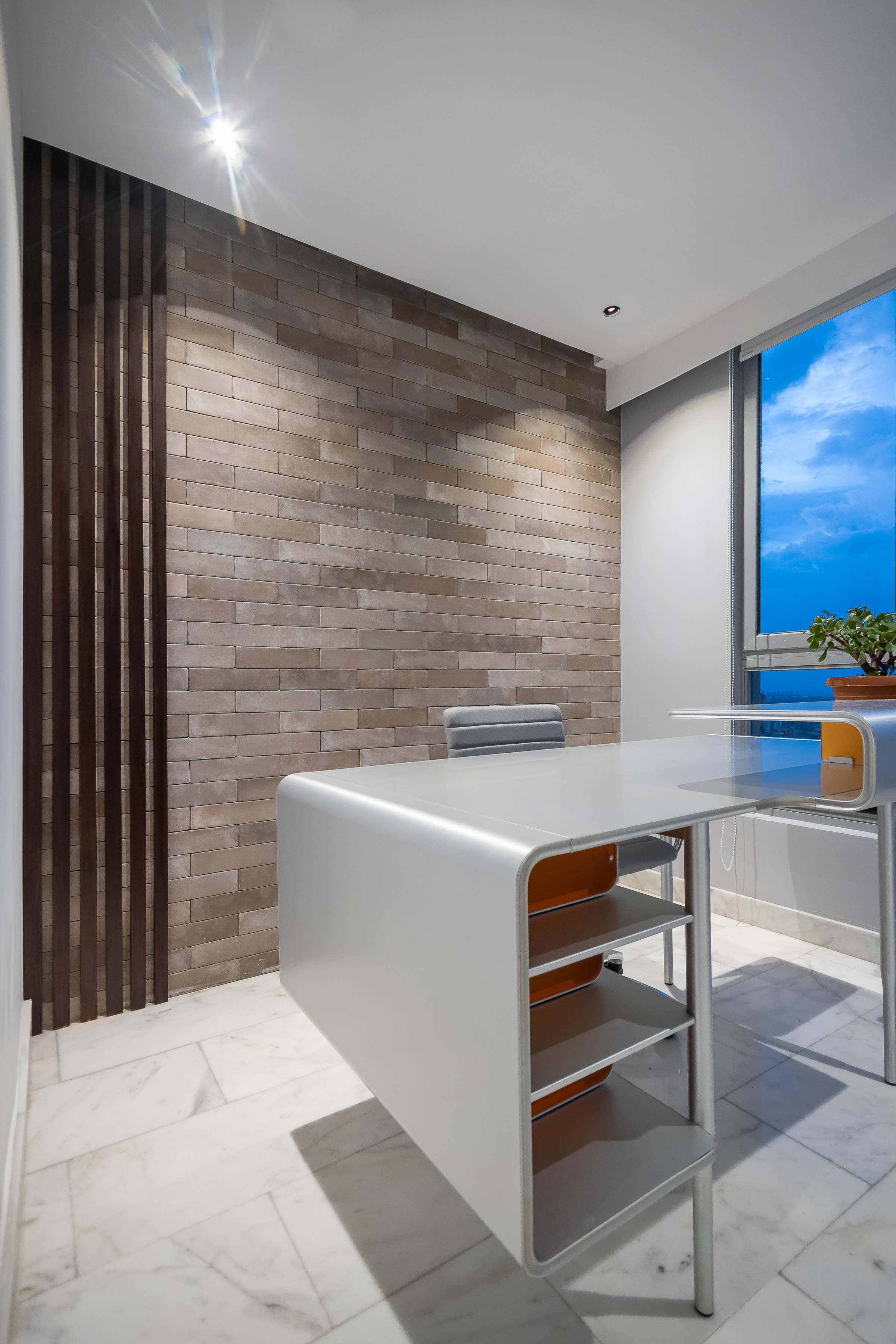
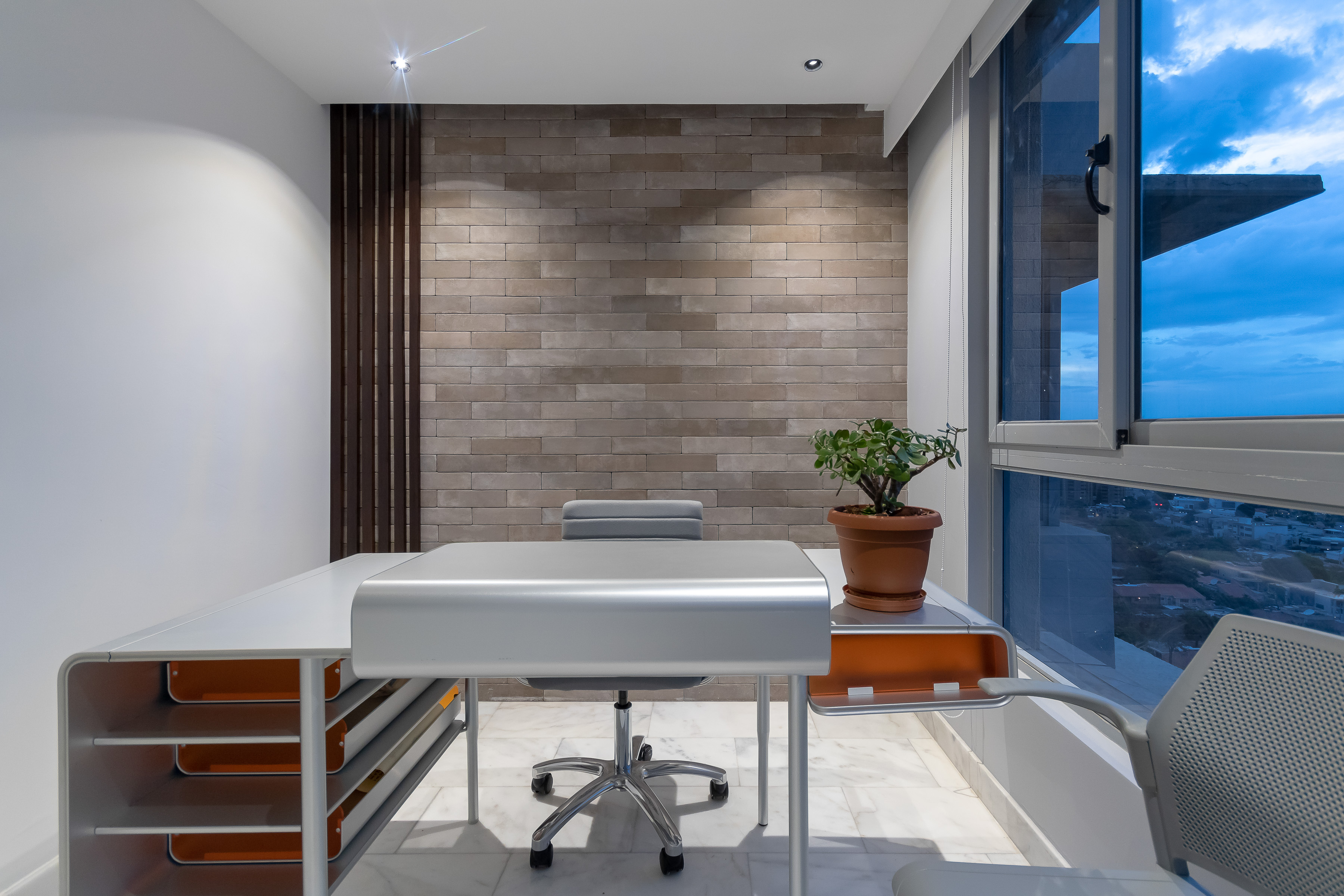
Proyecto residencial Apto CM19, Maracaibo, Venezuela.
OPEN SHOWERS: DELVE INTO THE APPLICATION OF THIS INNOVATIVE BATHROOM COMPONENT.
NEWS Open showers: delve into the application of this innovative bathroom component.On numerous occasions, emphasis has been placed on the drastic evolution that some key spaces in the home, such as the bathroom, have undergone; becoming an authentic sanctuary of...
INNOVATION AND ADAPTABILITY: REDEFINING THE HOTELS OF THE FUTURE
In the dynamic world of hospitality, hotels are constantly evolving to meet the expectations of modern travelers. Explore with us how advanced technology and innovative design approaches are transforming the guest experience.
4 EFFECTIVE STRATEGIES FOR IMPROVING ACOUSTICS IN THE HOME
Residential architecture aims at the constant search for improvement in the quality of life of the individual, through innovative techniques that satisfy absolutely all their needs. That said, sound plays a crucial role in this scenario of comfort; and it is imperative to address strategies that appease the noise traffic and envelop the home in a serene atmosphere.
